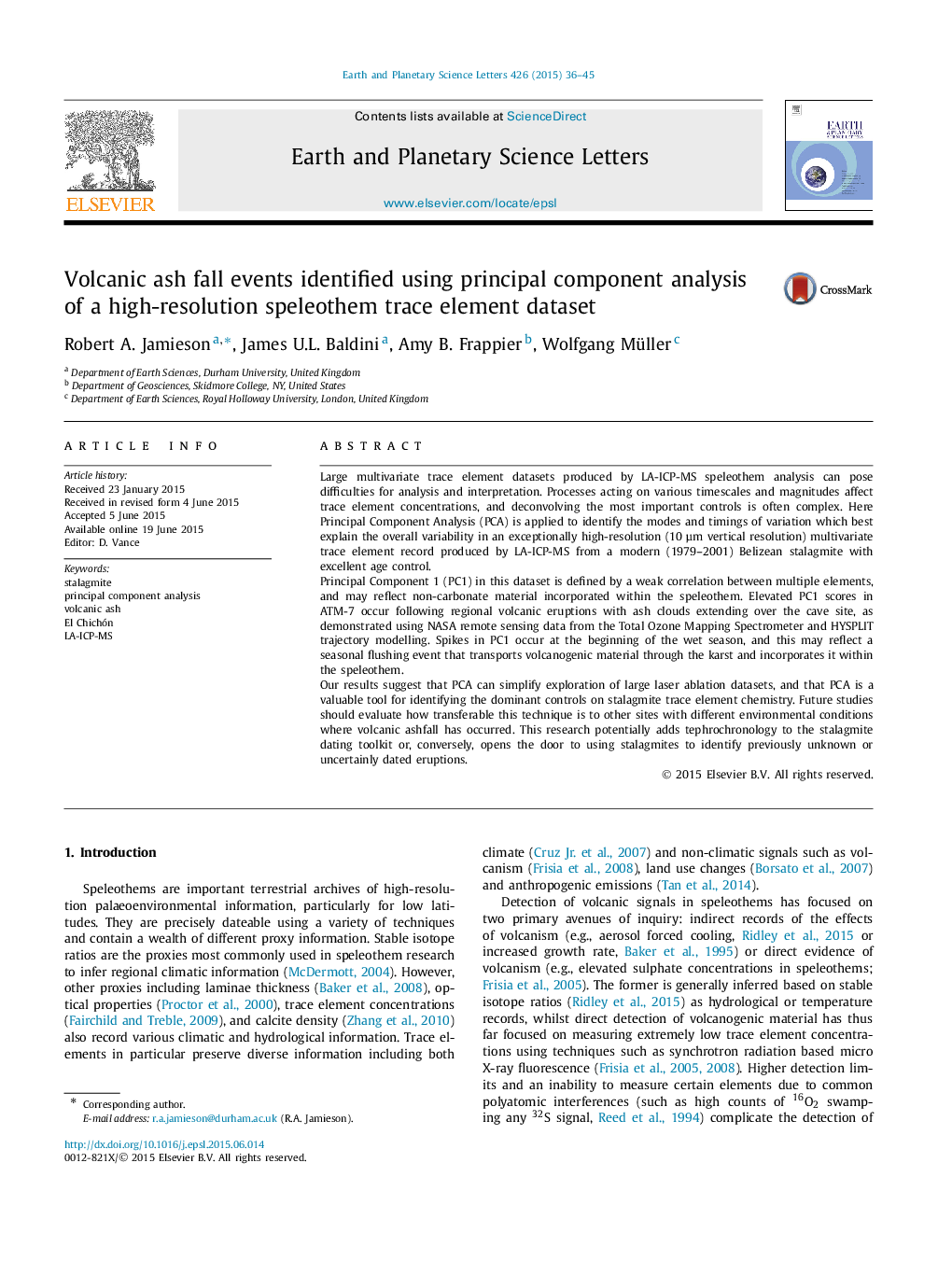| Article ID | Journal | Published Year | Pages | File Type |
|---|---|---|---|---|
| 6428116 | Earth and Planetary Science Letters | 2015 | 10 Pages |
â¢We present a high-resolution 22-year long LA-ICP-MS speleothem trace element record.â¢Principal component analysis used for exploratory data analysis of our large dataset.â¢We link historical volcanic eruptions to spikes in Principal Component 1 scores.â¢Volcanogenic material is flushed into the speleothem at the start of the wet season.
Large multivariate trace element datasets produced by LA-ICP-MS speleothem analysis can pose difficulties for analysis and interpretation. Processes acting on various timescales and magnitudes affect trace element concentrations, and deconvolving the most important controls is often complex. Here Principal Component Analysis (PCA) is applied to identify the modes and timings of variation which best explain the overall variability in an exceptionally high-resolution (10 μm vertical resolution) multivariate trace element record produced by LA-ICP-MS from a modern (1979-2001) Belizean stalagmite with excellent age control.Principal Component 1 (PC1) in this dataset is defined by a weak correlation between multiple elements, and may reflect non-carbonate material incorporated within the speleothem. Elevated PC1 scores in ATM-7 occur following regional volcanic eruptions with ash clouds extending over the cave site, as demonstrated using NASA remote sensing data from the Total Ozone Mapping Spectrometer and HYSPLIT trajectory modelling. Spikes in PC1 occur at the beginning of the wet season, and this may reflect a seasonal flushing event that transports volcanogenic material through the karst and incorporates it within the speleothem.Our results suggest that PCA can simplify exploration of large laser ablation datasets, and that PCA is a valuable tool for identifying the dominant controls on stalagmite trace element chemistry. Future studies should evaluate how transferable this technique is to other sites with different environmental conditions where volcanic ashfall has occurred. This research potentially adds tephrochronology to the stalagmite dating toolkit or, conversely, opens the door to using stalagmites to identify previously unknown or uncertainly dated eruptions.
